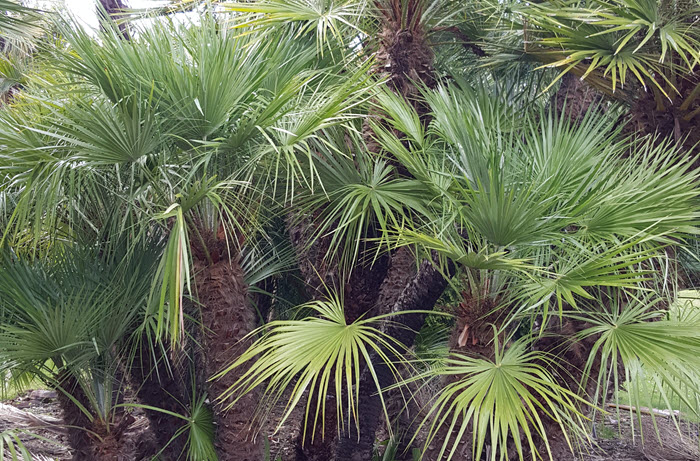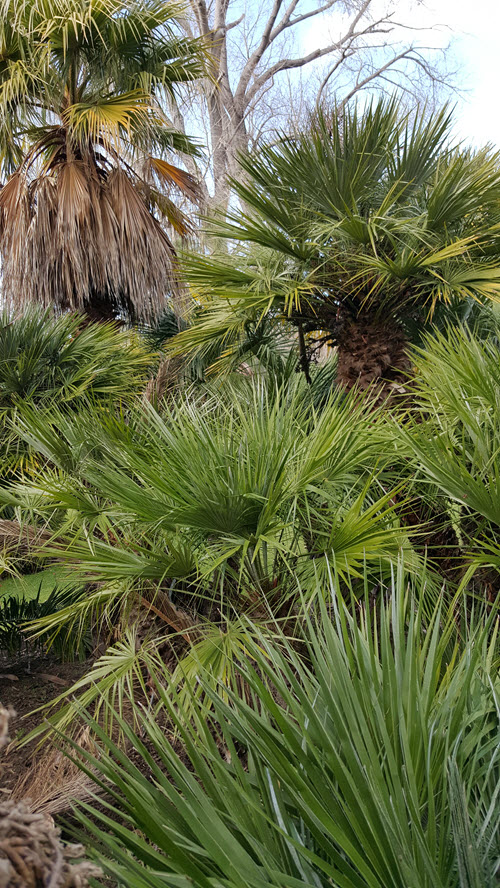The Palm Collection is listed on the National Trust of Tasmania Register of Significant Trees. Within the collection are specimens of the world’s most northerly palm Chamaerops humilis or Mediterranean Dwarf Palm, most Southerly Rhopalaostylis sapida or Nikau Palm, and highest altitude palm Parajubaea torallyi or Bolivian Mountain Coconut. Also present within the collection are good examples of the hardy Chinese Windmill Palm, Trachycarpus fortunei and the famous Lord Howe Island or Kentia Palm, Howea forsteriana of the north Australian coast.
At least one of the collection’s Palms is over 100 years old with a number of others nearing this age. Two of the oldest are the Phoenix canariensis or Canary Island Date Palms which towers majestically over the collection. The garden features palms from five continents including Australia as well as New Zealand, the home of the Nikau. It also displays some of the great diversity of the palm family, through the varying shapes, sizes, flowering and fruit types, their elegance and sometimes threatening appearance, with some palms protecting their fruit with heavy duty spines.
The collection was established in its current location in the years before World War 1. Prior to the current location the palms were planted just below the current Australian Collection on the Derwent highway side. One of the original palms is still in that location. This is the Chilean Wine Palm, Jubaea chilensis, in their native habitat the sweet sap from this species is used to make a wine, unfortunately the plant is usually killed in the harvesting process.
Palms provide the affect of a tropical garden even though we are in the cool temperate regions of Australia. The fact that the collection lies within only a few hundred metres of the Derwent river means that it gets a very stable and very much maritime climate, which is an ideal environment to grow most temperate climate plants. It is pleasantly surprising, however, to realise the wide variety of these magnificent plants are easy to grow even in Southern Tasmania.
The collection has been wonderfully augmented in recent years by the donations and support of two members of the local Palm and Cycad Society of Australia: Troy Donovan and Jonathan Cruickshank.



